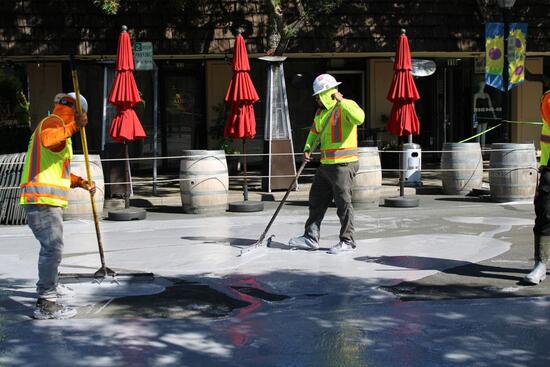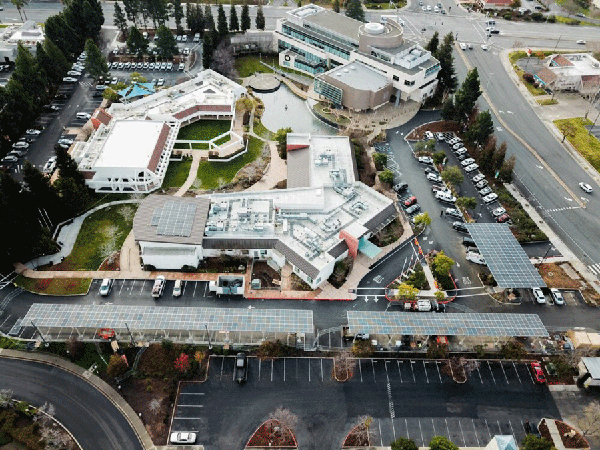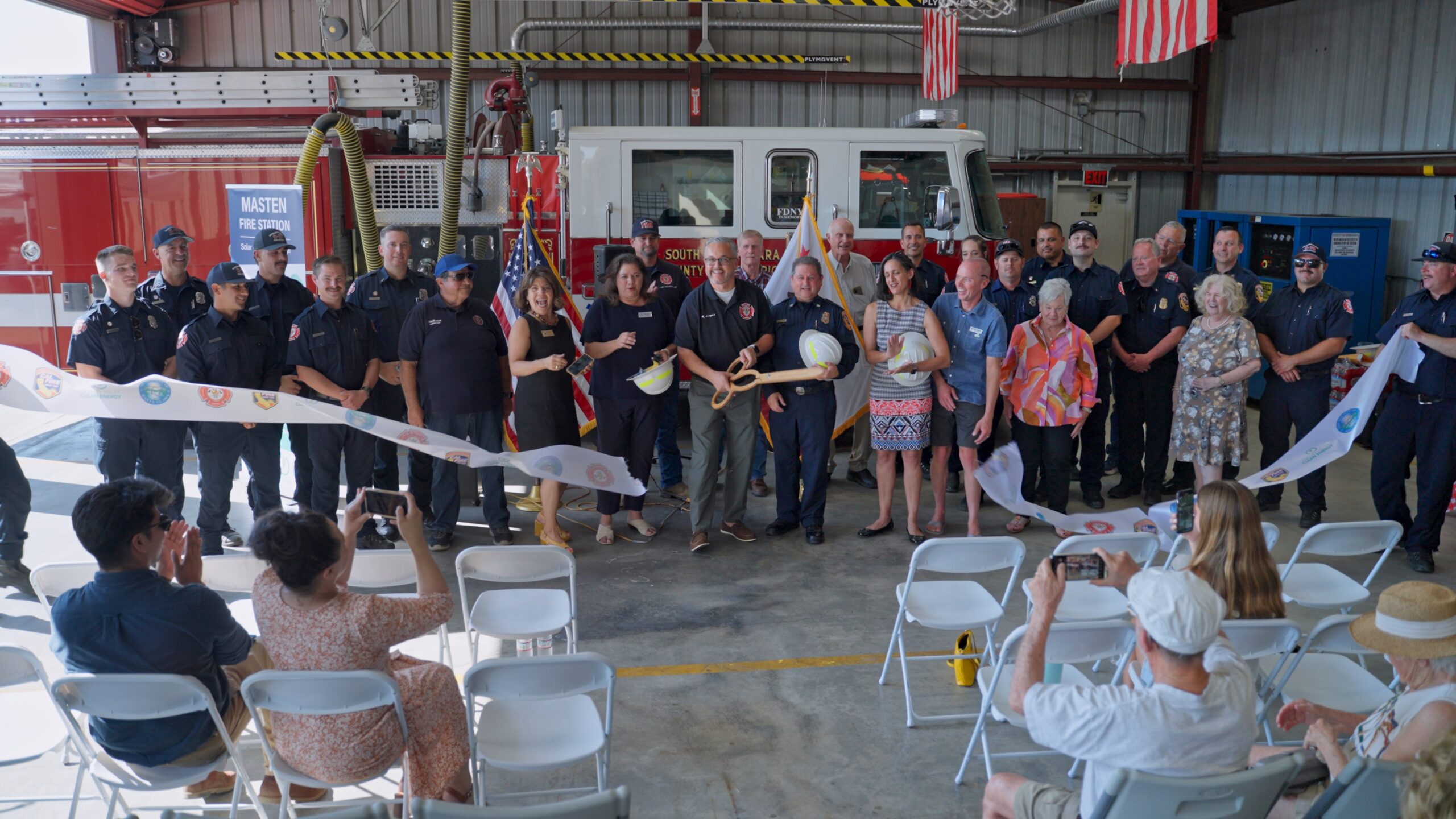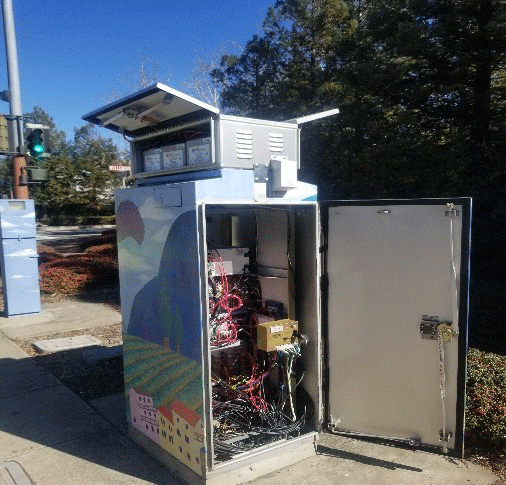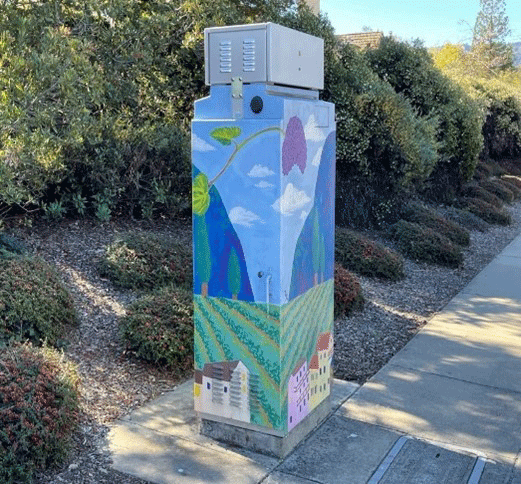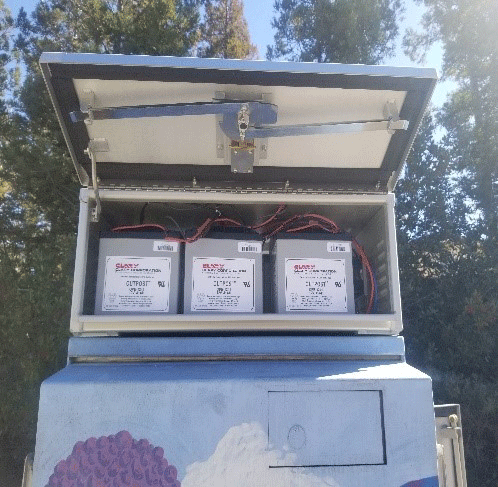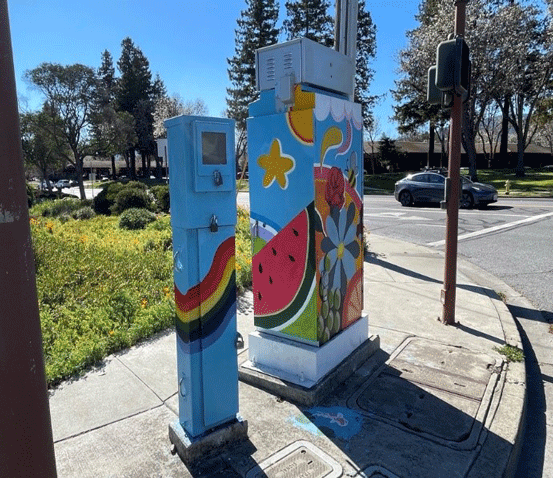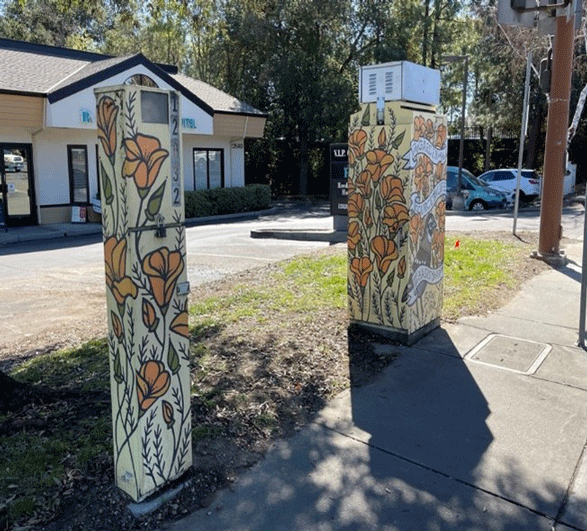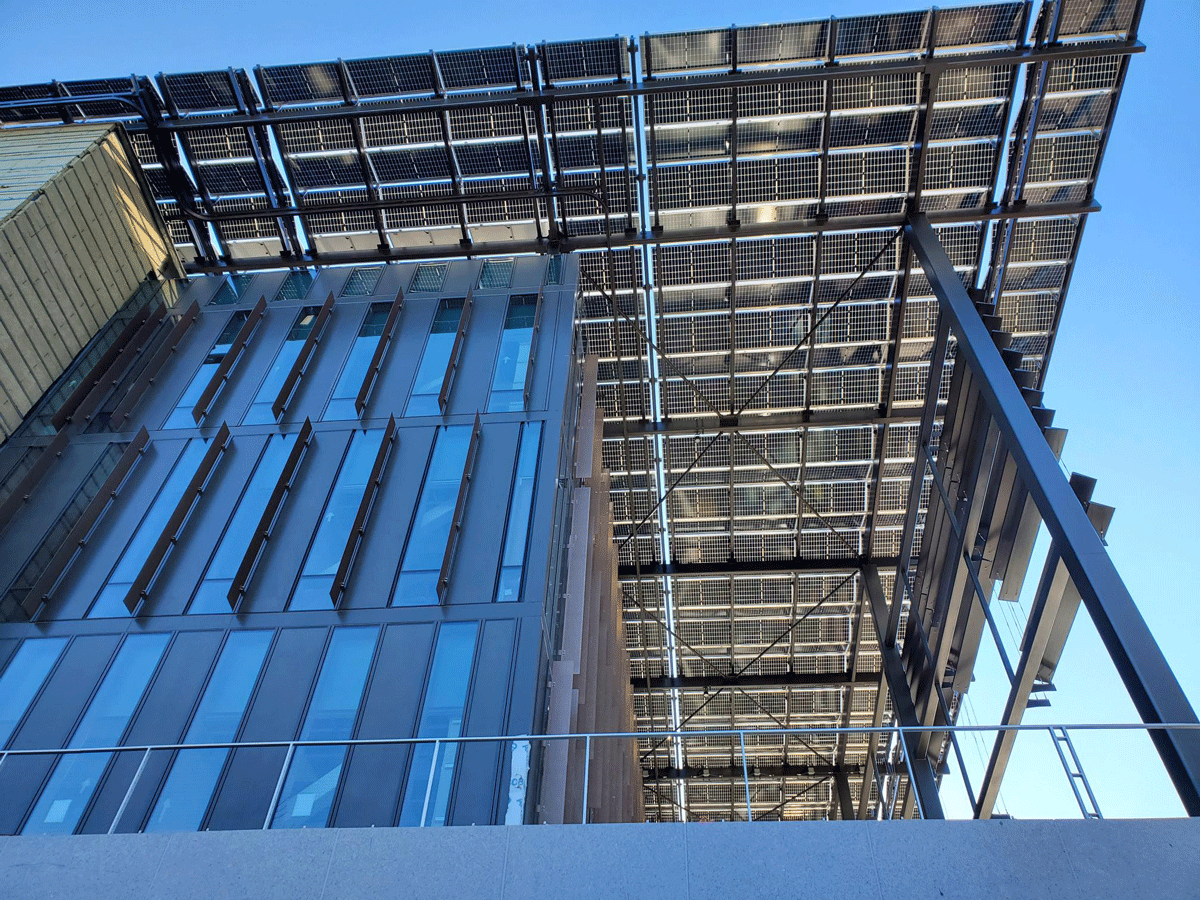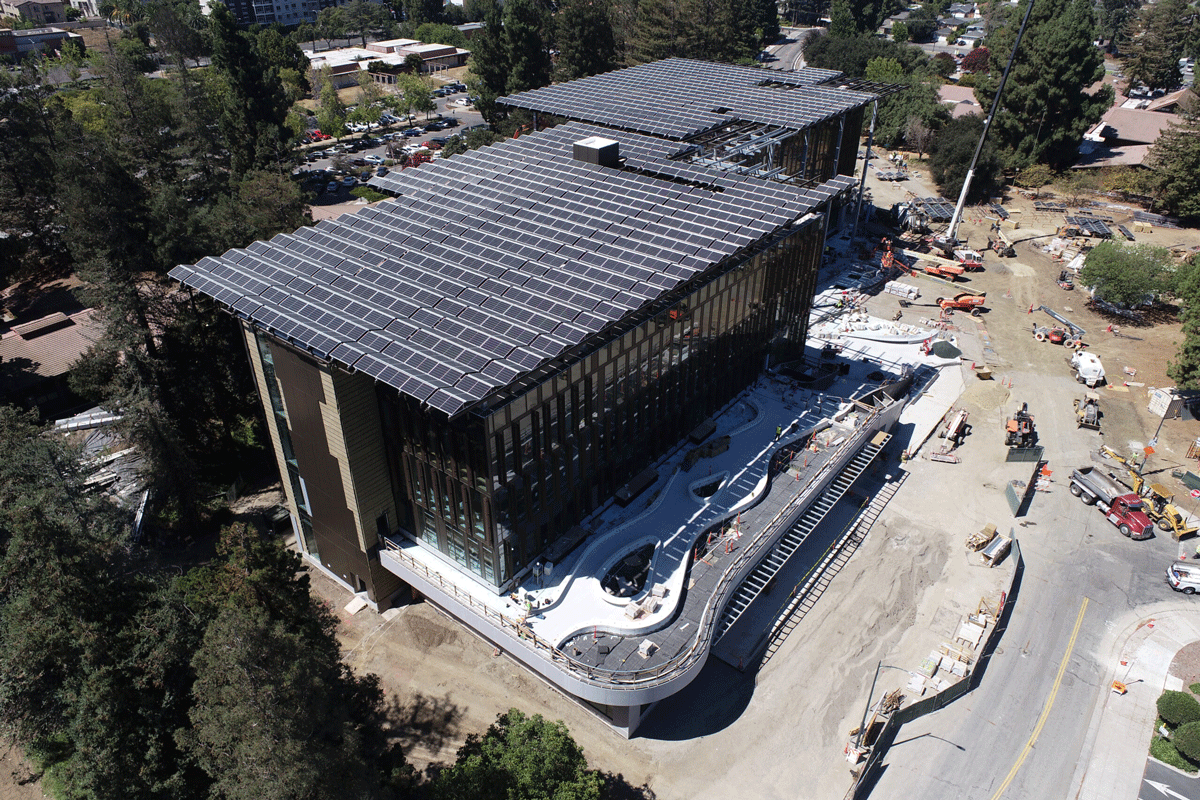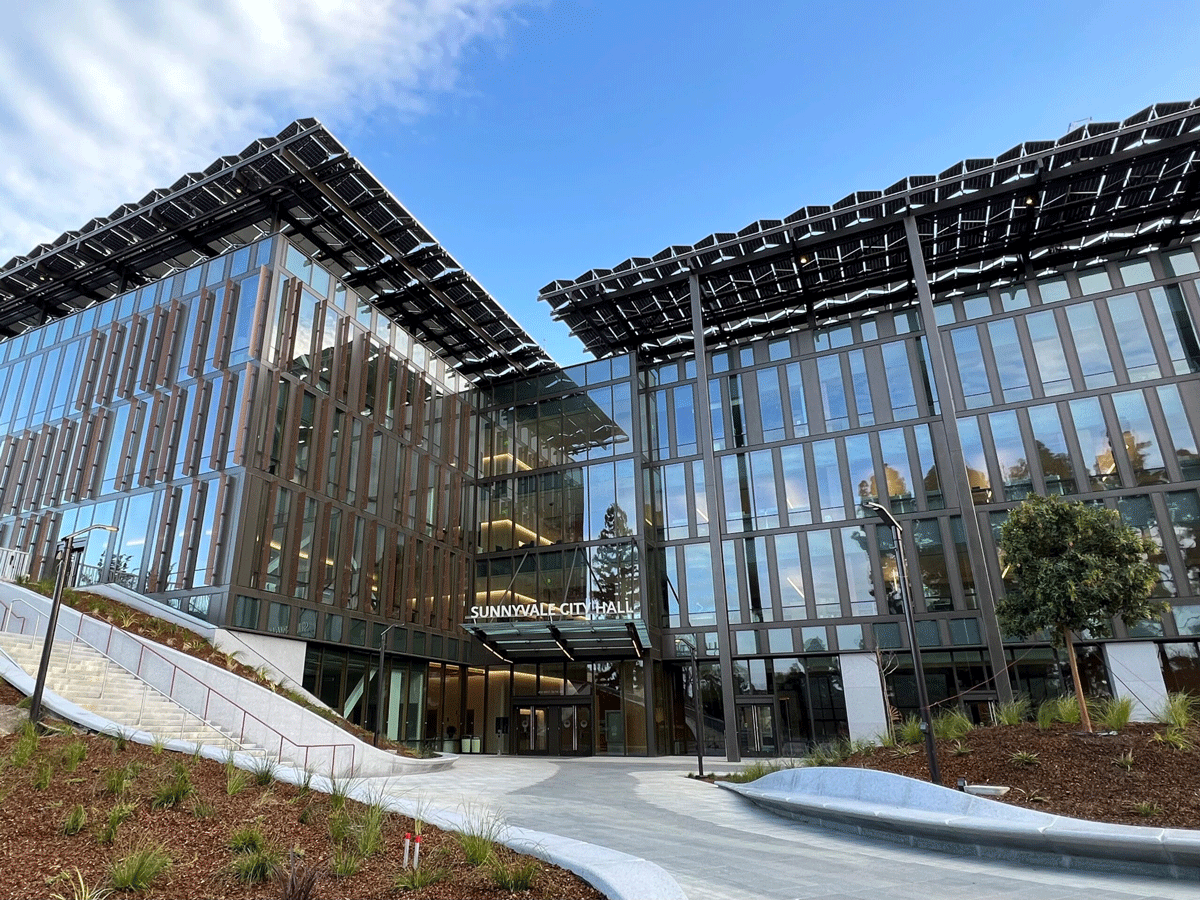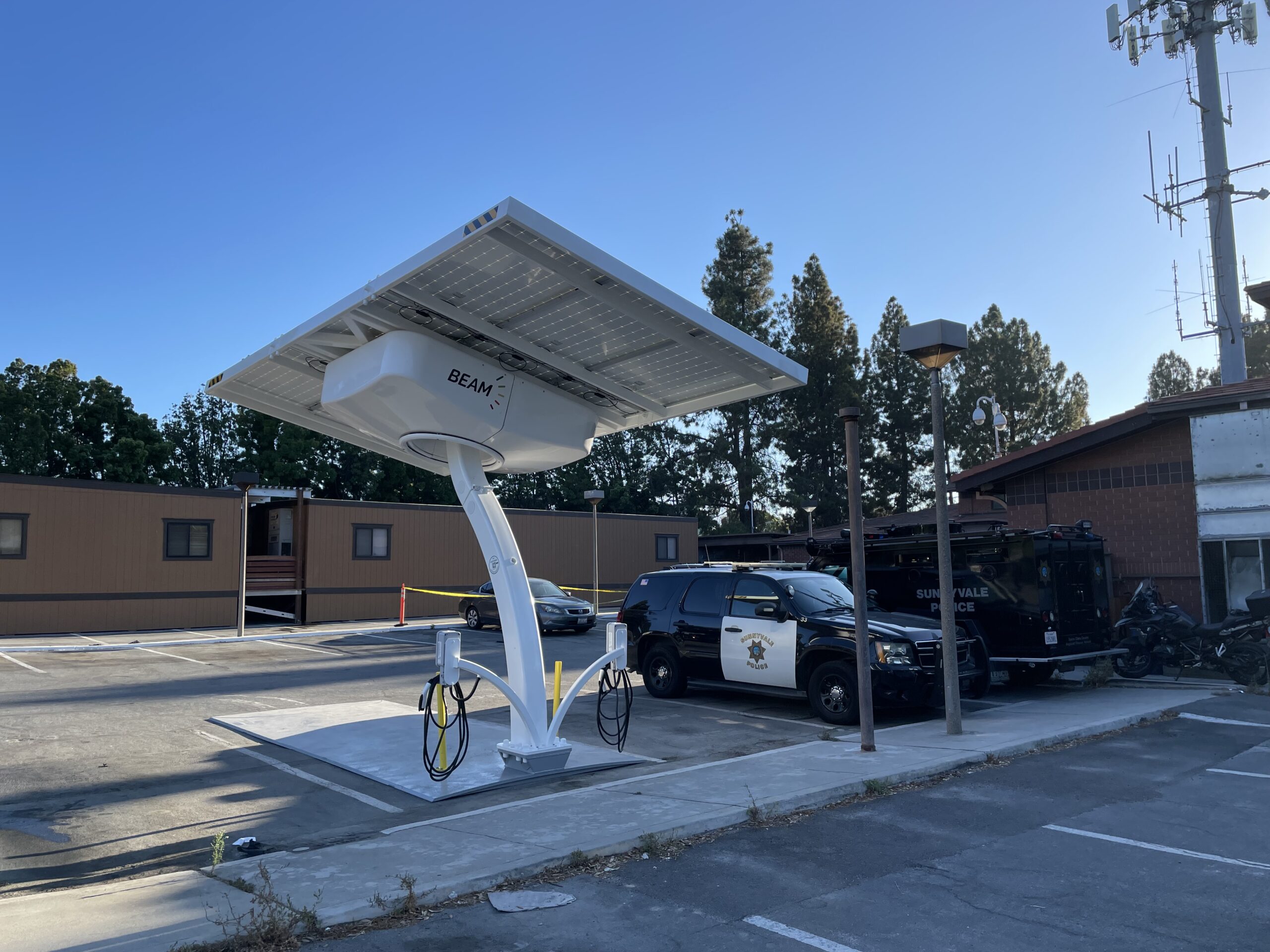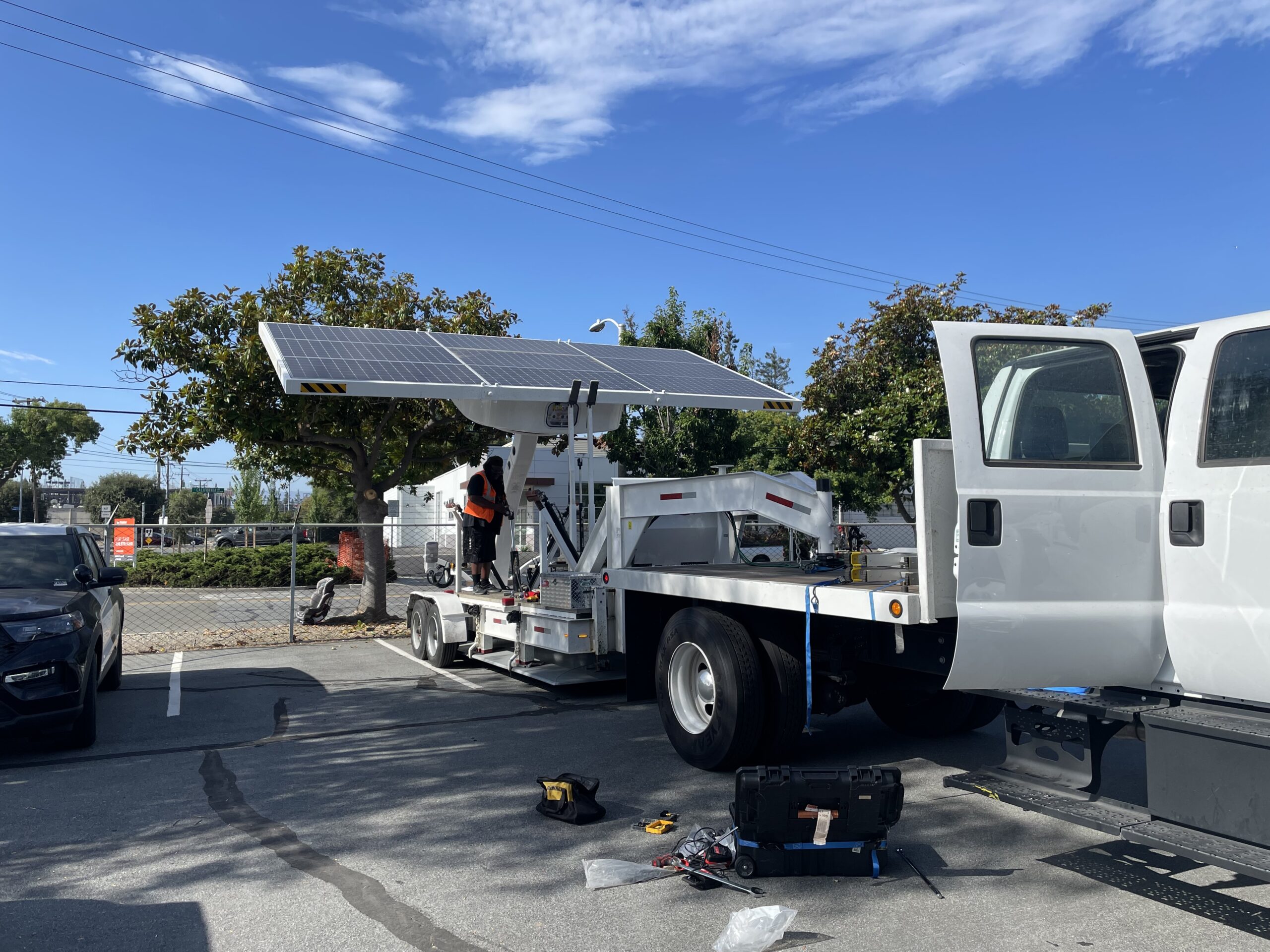Creating Resilient Communities
Silicon Valley Clean Energy (SVCE) supports our community’s ability to be resilient in the face of climate change.
Community Resilience Grant Programs
The SVCE Community Resilience Program is investing more than $5 million to help our region reduce the impacts of power outages from events such as earthquakes, PG&E Public Safety Power Shutoffs, storms, floods, and wildfires while supporting decarbonization and local job creation. The program provides SVCE’s 13 member agencies with grant funds to identify, prioritize, and implement resilient energy strategies.
Los Altos
Cool Pavements — The City of Los Altos used its $126,000 grant to install cool pavement coating in downtown Los Altos. Cool pavement, applied as a coat over roads, parking lots, sidewalks and similar spaces, reduces the land surface temperature by reflecting heat instead of absorbing it.
See More
“It’s exciting for the city to pilot the cool pavement coating technology in Los Altos, especially on a block where numerous summer events take place and restaurants operate, bringing many people downtown,” said Sally Meadows, Los Altos mayor and SVCE board member, in an Aug. 9 press release on the project. “We appreciate that SVCE, through its Community Grants, has offered Los Altos this opportunity. If this technology helps keep temperatures down, we can consider expanding its use, which will work toward the city’s Climate Action and Adaptation goals.”
Milpitas
Solar & Battery Storage — The City of Milpitas used its $700,000 grant to install a 75.6 kilowatt (kW) solar array and a 125 kW battery. In the case of a power outage or other emergency, Milpitas residents can count on the senior center and community center to be powered and up and running, providing conditioned shelter and a kitchen. Plus, first responders and city employees can use the center as a charging station to power necessary electronics.
See More
After receiving the funds in 2022, former Mayor Rich Tran shared, “I am very grateful to SVCE for making the City’s journey towards sustainability, environmental health and emergency resilience a reality. The grant award reinforces our Smart City Infrastructure Program, which is expected to save Milpitas over $1.5 million in energy and water costs per year for a total savings of more than $30 million over the program’s lifetime. I look forward to our continued partnership and success for many years to come.”
Santa Clara County
Solar & Battery Storage — The South Santa Clara County Fire District used their $100,000 grant from SVCE to install solar and battery storage and the Masten Fire Station in Gilroy. With the grant funding, the district installed thirty-four high-efficiency rooftop solar panels and two 8kw/10kWh batteries. In the event of a power outage or emergency, the system installed can keep the Masten Fire Station running for 8-10 hours.
See More
At the ribbon-cutting in July of 2024, Deputy Chief Caroll shared, “The South Santa Clara County Fire District is dependent on property tax for revenue which doesn’t increase enough annually. The savings of a solar system will allow us to replace broken and outdated firefighting equipment, which is a direct benefit to not only the community, but also the Cities of Gilroy and Morgan Hill, which we assist both on emergency incidents.”
Saratoga
Battery Backup at Traffic Light Signals — The City of Saratoga used its $139,000 grant to install backup battery systems at 14 traffic light intersections to increase traffic safety. If a power outage occurs, the backup batteries will switch on to power traffic lights and allow the city to maintain access to the signals, allowing them to maximize the safest and most effective flow of traffic if an evacuation is needed.
See More
“Many of our busiest signalized intersections are within or adjacent to high fire hazard areas and have lost power during planned outages in recent years, causing delays and confusion. We quickly realized that the issues we encountered during a planned outage would be drastically exacerbated during an emergency,” said Tina Walia, City of Saratoga councilmember and SVCE Vice Chair. “I am extremely grateful to SVCE for helping the City of Saratoga improve community resiliency by providing support for the traffic signal backup battery project and ensuring our traffic signals stay on.”
Sunnyvale
Solar & Battery Storage — The City of Sunnyvale used the $1M grant from SVCE to install solar and battery storage at their City Hall. The newly-constructed building is the first LEED Platinum certified and Net Zero Energy city hall in the country and has 1,653 photovoltaic (PV) solar panels that generate 1,099,000 kWh of power annually – enough to power about 103 homes for a year. The PV panels are paired with a 350 kWh battery energy storage system, adding energy resilience to the building. The solar system will produce power during the day, and in the event of an outage, the clean electricity stored in the batteries will be used to power critical building operations.
See More
“Sunnyvale’s new City Hall is an icon for sustainability and a true symbol for our city as the Heart of Silicon Valley. Our council and community set a bold vision to serve, engage and inspire with this building, and we’ve achieved it in a spectacular way,” said Larry Klein in 2023, Mayor of Sunnyvale.
Sunnyvale
Rotated Off-Grid EV Charger — The City of Sunnyvale used its $300,000 grant from SVCE to install four mobile off-grid electric vehicle (EV) charging stations. One station is located at the Public Library, and another at the Community Center, which provides publicly accessible charging for the community. The remaining stations are located at the Department of Public Safety and Corporation Yard for municipal electric fleet vehicles. Each station is equipped with a large, 4.3kW solar array and lithium-ion battery and has two EV charging ports. With its off-grid capacity, the stations will power EVs and additional equipment during an outage or emergency event.
Explore the projects below:
| Agency | Status | Location | Project Type | SVCE Grant Amount |
|---|---|---|---|---|
| Campbell | Under Construction | Corporation Yard | EV Truck & Off-Grid EV Charger | $198,000 |
| Cupertino | Under Construction | Quinlan Community Center, Senior Center, City Hall, and various parks | Rotated Off-Grid EV Chargers | $234,000 |
| Gilroy | Under Construction | Corporation Yard | EV Truck & Off-Grid EV Charger | $269,000 |
| Los Altos | Under Construction | Downtown and Grant Park | Cool Pavements | $126,000 |
| Los Altos Hills | Under Construction | Town Hall | Battery Storage | $50,000 |
| Los Gatos | Under Construction | Community Library | Battery Storage | $214,000 |
| Milpitas | Complete | Community & Senior Center | Solar & Battery Storage | $700,000 |
| Monte Sereno | Under Construction | Community Center | Battery Storage | $18,000 |
| Morgan Hill | Under Construction | Recreation Center | Battery Storage | $209,000 |
| Mountain View | Under Construction | Community Center | Solar & Battery Storage | $614,000 |
| Saratoga | Complete | Traffic Light Signals | Battery Backup at Traffic Light Signals | $139,000 |
| Sunnyvale | Complete | City Hall | Solar & Battery Storage | $1,000,000 |
| Sunnyvale* | Complete | Sunnyvale Public Library, Community Center, Department of Public Safety, and Corporation Yard | Rotated Off-Grid EV Charger | $300,000 |
| Santa Clara County* | Complete | South County Fire Station | Solar & Battery Storage | $100,000 |
| Santa Clara County | Under Construction | Martial Cottle Park, Levin Park, Joseph D. Grant Park, and Vasona Lake Park | Rotated Off-Grid EV Chargers | $230,000 |
* Agencies can split their total grant funds between multiple projects.
Resilience Framework
To guide the Community Resilience Program and other resilience projects, SVCE developed the Community Energy Resilience Framework. The Framework is designed to help SVCE communities prioritize resilience project implementation and reduce the impacts of grid disruptions. It articulates a shared vision for community energy resilience: the ability of a community to prepare for, adapt to, withstand and recover from power disruptions due to anticipated hazards.

